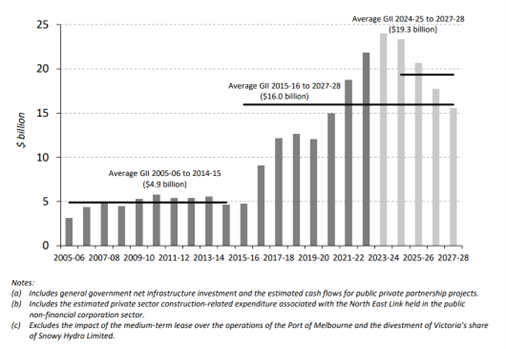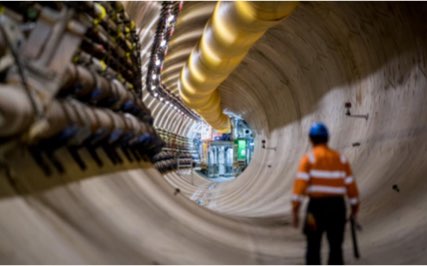
Victoria’s Budget: Implications for the Transport Sector
Victoria’s recently unveiled budget for the upcoming fiscal year holds significant implications for the transport sector. FSC Director John Fitzgerald provides a detailed analysis of key budget outcomes and their impact on the transportation sector.
- Committed Investment in Transport Infrastructure
The budget reflects the substantial increase in investment in transport infrastructure compared to the previous decade. This is largely attributed to committed spending on major projects that have already commenced, namely North East Link and Suburban Rail Loop. North East Link is well into the delivery phase, and the procurement process for Suburban Rail Loop is offsetting the completion of the Metro Tunnel Project and West Gate Tunnel Projects.
- Locked-In Resource Requirement
The significant investments earmarked for transport projects indicate a ‘locked-in’ resource requirement for the next few years. This implies stability and predictability in funding for ongoing and upcoming transportation initiatives, providing a conducive environment for planning and execution. There is a substantial forecast shortfall that needs to be addressed.
- Government Spending Trends
Budgeted government spending on transport infrastructure in Victoria is currently at its peak, projections suggest a subsequent decline in the coming years. Notable in this budget was funding for new, unannounced road upgrades.
Rail projects haven’t featured much in this budget, with projects including works on the Upfield Line as part of the Level Crossing Removal Project along with the much-discussed Melbourne Airport Rail (now SRL – Airport) being delayed several years.
Companies are already anticipating this and are looking to alternative sectors to sustain and grow their revenue. Some sectors being targeted are:
- Energy
- Defence
- Water
- Health
- Education
- IT, specifically Data Centers
- Energy Efficiency and Carbon Reduction
The Victorian Government announced $3.9b in new capital expenditure in FY25’s budget, only 8% ($312m) is for transport infrastructure with approximately a third of this for capital maintenance. The bulk of the new investment is in Health and Education.
4. Challenges and Opportunities
Challenges such as cost overruns and completion delays loom large over transport projects. Inflationary pressures and escalating construction costs add complexity to budget management and project execution. However, these challenges also present opportunities for innovation and efficiency improvement within the transport sector.
There was interesting commentary on cost and schedule performance for recent projects:
- Movements in the state capital program The Budget Paper No. 4 2024-25 State capital program includes 632 projects that are funded by the Government and have been classified as either existing, completed or discontinued projects since they were last reported in the 2023-24 Budget. The overall performance of the capital program continues to meet expectations with adherence to project budgets since the last reporting period.
- Analysis of all 632 budget-funded projects shows a 3.9 per cent net increase in project costs measured since the 2023-24 Budget, and a 26 per cent variance on project completion timeframes measured since the 2023-24 Budget. Analysis of 131 budget-funded major projects with a TEI above $100 million shows a 4.0 per cent net increase in project costs and a 24 per cent variance on project completion timeframes since the 2023-24 Budget.
- The net cost increase is 0.5 per cent across all projects excluding the North East Link project changes previously disclosed. Inflation is estimated to have averaged 4 per cent across the Victorian economy in 2023-24. Increases to the cost of materials, labour and transportation have pushed up the cost of construction in Victoria by around 22 per cent since 2021.
5. Existing Transport Initiatives
The budget underscores the government’s commitment to ongoing transport initiatives, including road upgrades, maintenance, and maritime infrastructure development. These investments aim to enhance connectivity, improve road safety, and facilitate economic growth across Victoria.
Summary
Victoria’s budget presents a favourable, short term outlook for the transport infrastructure sector, with a robust pipeline of work for the next 5-10 years. There doesn’t appear to be much in the front-end development phases indicating a shortage of new projects coming online once the current crop of major projects move into completion phases. This poses a strategic challenge for operators reliant on government spending that needs to be considered now.
Subscribe to our mailing list
Be alerted when new articles and insights are published.
